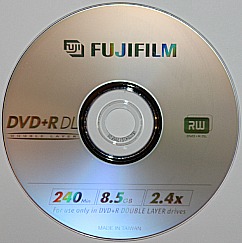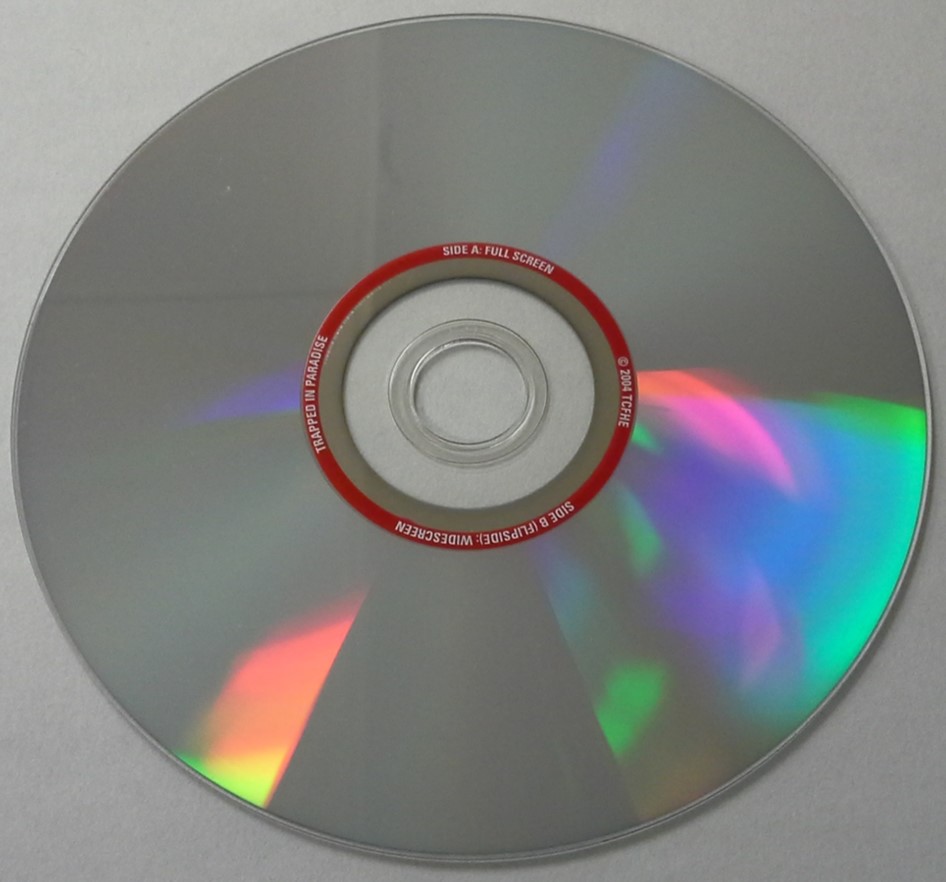Dual Layer DVD Media
Dual layer DVD media provide more storage capacity for the storage of digital information than standard digital versatile discs.
A standard DVD only has one layer on one side of the disc and can store up to 4.7 GB of data. However, because of the structure of DVDs, there is some flexibility in terms of adding more layers that can store information.
CD and DVD Structures
DVDs differ from CDs in several ways, but one of the most significant is the disc structure. DVDs are actually two discs, half the thickness of a CD, glued together top side to top side, whereas CDs and Blu-rays are only one disc. This two disc structure allows DVDs to have more than the standard one information layer on one side of the disc and this is usually referred to as dual layer DVD media.
The number of layers found on a DVD depends on whether the DVD is a read-only DVD, recordable DVD, or erasable or rewriteable DVD format. First of all, the erasable DVD (DVD-RW or DVD+RW) is only found in the single information layer and single-side format and can only store 4.7 GB of digital information.
Single and Dual Layer Recordable DVD Formats
The recordable DVD can be found in either the single-layer and single-sided format (4.7 GB storage capacity) or the DVD-R DL and DVD+R DL formats which have dual information layers and are one sided.

The top side of the DL disc usually has a label as shown in the image on the right. The capacity of these discs is 8.5 GB, not exactly double the 4.7 GB because of some factors related to making this dual layer technology work. The great advantage of such discs is the fact that both information layers are readable from one side of the disc and therefore no disc flipping is necessary to take advantage of the higher disc capacity provided by the second layer.
Dual Layer DVD Read-Only Format
DVD-5
When it comes to the read-only format, which is usually represented by the movie DVD, there are more options available in terms of disc structures. First you can have a DVD-5 format, which is a disc with a single information layer and one side. These discs can hold 4.7 GB of information, have a label on the top side, and for movie DVDs are generally used for older movies that do not require great quality or very short movies which would also require less storage space.
DVD-10
The next format of read-only disc is the DVD-10 format. The DVD-10 movie disc has one information layer on both the top and bottom sides of the disc. This gives the disc a total capacity of 9.4 GB. The DVD-10 format is usually treated as two separate discs because in order to access the other side the disc would have to be flipped over. The only labeling is usually on the hub as shown in the picture below.

No labeling can be present on the main disc surfaces because both sides need to be read and the laser light cannot read a disc through the label. This format of DVD often contains different versions of the same movie such as widescreen on one side versus 4:3 aspect ratio on the other or the movie in one language on one side and a different language on the other side.
DVD-9 and DVD-10 Dual Layer DVD
The next two formats of read-only DVDs are the DVD-9 and DVD-18 discs. These are the dual layer DVD media. The DVD-9 media contains two information layers readable from one side of the disc and therefore no disc flipping is necessary. This makes it the most popular DVD movie format because you want a movie to play through without interruption. Often you will notice a slight hesitation in a movie at about the one hour mark as the laser light is refocused from the first information layer to the second information layer deeper in the disc structure.
The image below is taken from the back of the packaging of a DVD movie disc. This is a dual-layer and one sided disc and it clearly states that the layer transition will trigger a slight pause or hesitation when the disc is being played. This statement is likely present to ensure the viewer of the movie that there is no flaw in the disc but simply a by-product of this format type.

The other side of the disc contains a label. The capacity of this format is 8.5 GB and new releases or any movies that require better quality or longer length use this format. These discs can appear to be gold, light gold, or silver in appearance when looking at the non-label side of the disc due to the different materials that are used for the metal reflective layer in the disc. Newer dual-layer DVDs are mostly silver in color.
The DVD-5 and DVD-10 formats always have a silver appearance on the non label side. The DVD-18 dual layer DVD media has two information layers on each side of the disc and therefore only the hub is labeled. The storage capacity is 17 GB and these discs are rare, but if you encounter them they may appear gold, light gold, or silver.